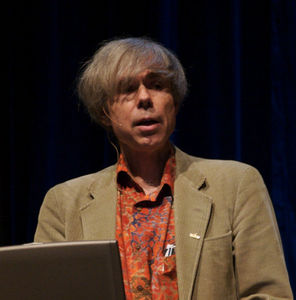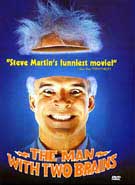 A day when a French writer has been threatened with death for writing that Islam harbors violent tendencies seems appropriate for considering the role played in the propagation of destructive and divisive religous beliefs by the indoctrination of unwilling children.
A day when a French writer has been threatened with death for writing that Islam harbors violent tendencies seems appropriate for considering the role played in the propagation of destructive and divisive religous beliefs by the indoctrination of unwilling children.
This is a point that Richard Dawkins makes at great length in his new book The God Delusion, which I’ll have more to say about later from the neurotheological perspective. What interests me here is the connection Dawkins makes between the religious abuse (my term) of children and sexual abuse. His point is that, of the two, religious abuse—scaring children with stories of hell, to name just one example—does more profound damage than sexual abuse. He goes so far as to call the current preoccupation with child sex abuse “hysterical” and to compare it with the Salem witch trials.
Hear hear. As I write this, NBC is running a series on its Dateline “news program” called To Catch a Predator, where an on-line decoy posing as a 14-year-old girl, perhaps, entraps foolish men by offering sex if they come to her house where she will be alone. The level of the scam rises to the decoy reminding the victim to bring condoms and liquor. When the clueless prey actually show up at the house, they are met by a reporter who reads back to them their crude chat room dialog and asks them if they really intended to have sex with a 14-year-old. On leaving the house, the men are thrown to the ground by waiting local police and hauled dramatically off to the police station. This scenario is repeated, with very little variation other than the age and profession of the target of the sting, a dozen times in one program. At the end of the program, experts solemnly aver what a grave danger has been averted by capturing these vicious predators before they could harm innocent children.
Try again, NBC. Given what losers these guys are, the chances they would have ever actually done anything without being actively set up are nil. If they have enough money to get a good lawyer, which they probably don’t exactly because they are such losers, they should be free in a heartbeat. Can you really be convicted of corrupting the morals of a minor when the minor is not a minor or doesn’t exist at all? All this program does is show how stupid the network, the audience, and the entrapped men all are. (See a critique from the journalistic perspective.)
Right here in California a proposal to crack down hard on these disgusting perverts, the so-called Jessica’s Law, Proposition 83, will be on the ballot in November. Reportedly over 80% of the voting public are in favor of this. It’s being compared to the Three Strikes Law—a great success which allowed prosecutors to put a man in jail for 50 years for stealing some videotapes (the Supreme Court said that was not cruel and unusual punishment).
The proposal is massive draconian overkill. It makes a mockery of due process by allowing people to be kept incarcerated—not in a jail, of course, but a “hospital”—after they complete their sentence, simply on based on the opinion of a psychiatrist, with no appeal process. It brings many more offenses, including misdemeanors, or boys having sex with their girlfriends, into the metastatizing sexual predator frenzy. It will be expensive, not least due to the requirement for all sex offenders to wear ankle bracelets for the rest of their lives. It will crowd the jails with minor offenders. The residential restrictions will drive the offenders away from populated areas with police and counseling facilities. The entire premise—that sex offenders lurk in bushes then jump out to rape and kill our children—is false.
To its credit, the Sacramento Bee came down against this ineffective initiative:
Sex offenders who prey on children are every parent’s nightmare, and understandably so. Unfortunately, the fear they evoke makes them the bogeyman of choice for pandering politicians. What better targets for candidates in search of an easy issue to demagogue? Proposition 83 is a case in point. Despite Proposition 83’s title—the Sex Offenders, Sexually Violent Predators, Punishment, Residence Restrictions and Monitoring Initiative Statute—it would do nothing to protect children.
There is certainly a class of crimes that are despicable and reprehensible and need to be treated with the same severity as any other serious crime. However, a hallmark of the “debate” about juvenile sexual predation is to fail to make any distinction between such crimes and much less serious ones, or ones which should arguably not be crimes at all. It is no accident that this is the same society where a school teacher in Texas is fired for taking her class on a field trip to a museum which happens to include ancient statues with bare breasts or even dangling penises.
If sexual offenders are such evil incarnate, of such a uniquely perverse nature that they should be treated in a way completely different from regular criminals, let’s adopt unique approaches like not letting them of prison even after they’ve finished their time—just keep them locked up forever. Ooops—we’re already doing that in many places, and that’s one of the things Jessica’s laws wants to do. Well then, how about punishing them even before they offend, in a Minority Report sort of way? That’s already being done too, under an Ohio rule that allows judge to categorize people as sexual offenders, put them on the register, and subject them to all the relevant restrictions, even if there is merely a suspicion that they might have done something bad. The next step, which I’m sure somebody will propose soon enough, is to give the entire population MRIs to see if they’re interested in kids and throw them in jail right then and there.
If addition to the disproprortionality of the punishment to the crime in individual states, another problem is the gross inequity in sentencing levels from state to state. The exact same crime committed in one state could result in a sentence ten or more times longer than if committed in another. This hardly seems like the equal treatment under the law promised by the Consitution.
That we think of pedophiles in a frenzied horror, as opposed to say, murderers, who commit crimes every bit as heinous, is a reflection of our natural need for symbols of pure evil in our lives.
 I got a copy of Douglas Hofstadter’s “I Am a Strange Loop” (Amazon) for my birthday and spent the next month puzzling over why this inane book ever got written, other than to make a few bucks from aging technohippies with fond memories of Godel, Escher and Bach. It’s basically a random collection of unstructured jottings, boring personal stories, and contentless musings. Try as he might, Hofstadter never manages to convince us of the connection between Godel’s proof and some kind of loop that supposedly lies at the basis of our consciousness. Oddly, there’s almost no reference to any of the actual research in neuroscience or related fields which has started to cast light on the phenomenon of consciousness in recent years.
I got a copy of Douglas Hofstadter’s “I Am a Strange Loop” (Amazon) for my birthday and spent the next month puzzling over why this inane book ever got written, other than to make a few bucks from aging technohippies with fond memories of Godel, Escher and Bach. It’s basically a random collection of unstructured jottings, boring personal stories, and contentless musings. Try as he might, Hofstadter never manages to convince us of the connection between Godel’s proof and some kind of loop that supposedly lies at the basis of our consciousness. Oddly, there’s almost no reference to any of the actual research in neuroscience or related fields which has started to cast light on the phenomenon of consciousness in recent years.
 Last weekend we visited the
Last weekend we visited the  The
The  It can be a shock leaving a first-world country and going to a third-world one.
It can be a shock leaving a first-world country and going to a third-world one. In the case of the Brazilian religious group wanting to import its hallucinogenic tea (
In the case of the Brazilian religious group wanting to import its hallucinogenic tea ( A day when a French writer has been threatened with death for writing that Islam harbors violent tendencies seems appropriate for considering the role played in the propagation of destructive and divisive religous beliefs by the indoctrination of unwilling children.
A day when a French writer has been threatened with death for writing that Islam harbors violent tendencies seems appropriate for considering the role played in the propagation of destructive and divisive religous beliefs by the indoctrination of unwilling children.
 Neuroscience is rapidly permeating popular culture. Proof in point: Jim Holt’s recent New York Times Magazine article,
Neuroscience is rapidly permeating popular culture. Proof in point: Jim Holt’s recent New York Times Magazine article,  It’s just a matter of time before the brisk sales of
It’s just a matter of time before the brisk sales of  Bread is central to our Western civilization, so much so that it’s a common metaphor for spiritual nutrition. The starving Israelites wandering in the desert survived on manna from heaven. Jesus multiplied the loaves to feed the multitudes.
Bread is central to our Western civilization, so much so that it’s a common metaphor for spiritual nutrition. The starving Israelites wandering in the desert survived on manna from heaven. Jesus multiplied the loaves to feed the multitudes.